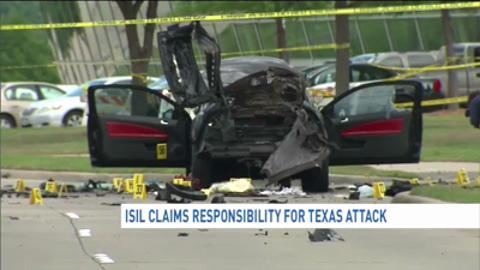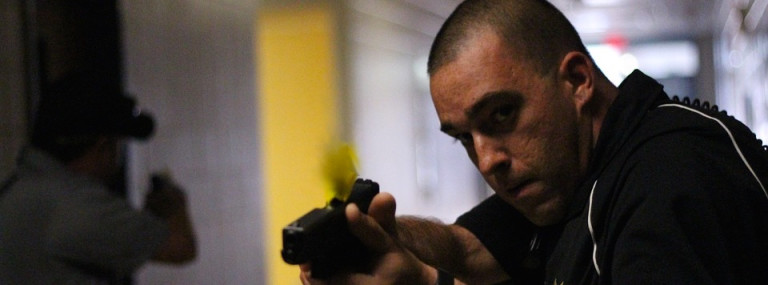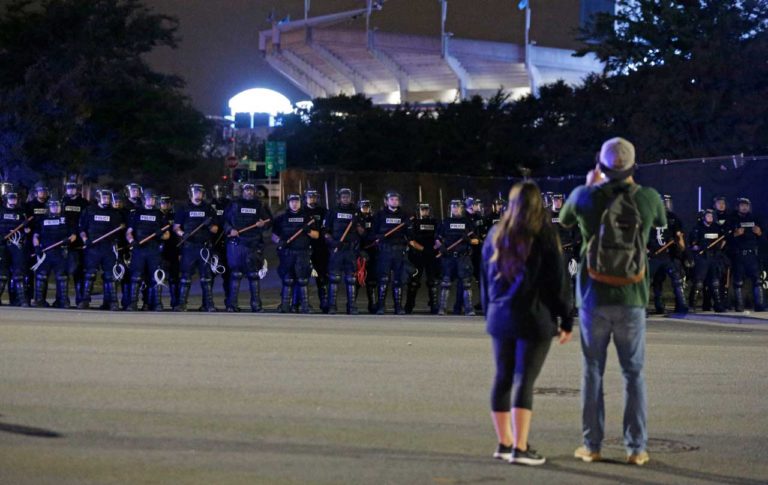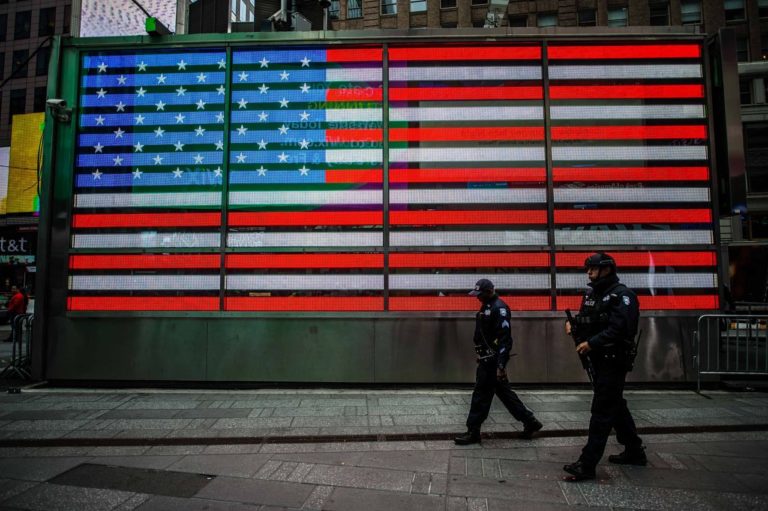Life Saving Tactics When Shots are Fired in Shopping Malls

Predator: Cullen TenEyk: Joint Special Operator, Global Shooter of Bad Guys and extremely professional predator of all enemies to the United States.
Discussion: I agree with Joshua Keating’s comments in his September 2013 Slate Magazine article, “Why Shopping Malls are Attractive Targets for Terrorists.” Keating suggests that the primary lesson learned from the swarming siege at the Westgate Mall in Nairobi, Kenya in September 2013 by Somali Al Shabaab jihadists is that Al Shabaab appears to have developed a global reach, and Al Qaeda is certainly not on the run.
It leads me to wonder how vulnerable we are in the U.S. to similar swarming attacks by homegrown surrogate groups or individuals. Are ideologies, motivations and relationships with larger, perhaps international sponsors relevant in our analysis to develop deterrence, preventive and response measures? Or can we develop generic prevention and response procedures that are independent of those considerations?
The idea that terrorist groups or individuals will target shopping centers for attacks is not new. Keating cites a 2006 Rand Corporation analysis warned that, “in terms of their potential role as terrorist targets, shopping centers present numerous challenges for security.” The study also reported that there have been over 60 terrorist attacks against shopping centers in 21 countries since 1998.
Shopping centers and malls can attract crowds of people, and, as the Rand study suggests, “allow unimpeded access to the public and attract a wide cross-section of the nation’s population.”
Therefore, U.S. shopping malls make particularly attractive soft targets, and we can expect them to feature prominently in future attacks; it’s a threat that is unlikely to fade anytime soon. Indeed, there is evidence that international terrorists or groups have threatened to attack malls in the United States, although none of those threats or planned attacks have been implemented.
Furthermore, shopping centers and malls “differ markedly from facilities like airports, which provide an essential service with few alternatives,” the Rand study authors write, and “[f]or this reason, shopping center customers and tenants may not tolerate the expense and inconvenience of increased security.”
Moreover, malls often have complex ownership and stakeholder structures that “increase the difficulties of implementing security and other risk-reduction measures.” The high marginal costs of additional security measures force many mall managers to discard those measures.
The result is that most shopping centers and malls throughout the U.S. remain relatively unprotected from well-planned swarming attacks. On the other hand, anecdotal evidence suggests that many Americans may not tolerate preventive measures that would keep them safe.
We know that jihadist groups often conduct thorough after action reviews of other successful and unsuccessful attacks around the world to build on success and to improve on mistakes.
Al Shabaab seems to have modeled the Westgate Mall attack on the 2008 Mumbai, India attack conducted by the Pakistani group Lashkar-e-Taiba, with minor variations. We can expect groups or individuals to build on the India and Kenya attacks to refine their methods as they conduct reconnaissance for the next vulnerable soft target.
We can presume that most of these groups and individuals will conduct all or part of the phases traditionally associated with an attack cycle, and I will explore those phases in a subsequent posting.
Building on that presumption, we can then develop collective and discrete strategies and tactics to detect these subtle or overt early warning signs of a potential attack which, in turn, allows stakeholders to develop, fund, coordinate and rehearse the most effective prevention and response measures.
Given the potential for individuals or groups to increase these types of attacks in the U.S. calls for public and private stakeholders at all levels to integrate resources and develop a unified response to this growing threat.
State and federal law enforcement and intelligence efforts will continue to develop templates that help stakeholders at any soft target recognize activities indicative of the planning phase of these operations.
Meanwhile, I propose that our near-term efforts should focus on the development of a formal stakeholder consortium to sponsor a nation- wide effort to educate citizens on how they should respond to such an attack.
So, for now, we can focus our discussion on this question: What immediate actions should you take in the event of a terrorist or active shooter attack?
The U.S. Department of Homeland Security (DHS) along with recent lessons learned from the Nairobi Westgate Mall and other attacks, such as the Columbia, Maryland mall attack, offer procedures that apply in nearly any venue.
DHS defines an active shooter as, “[a]n individual actively engaged in killing or attempting to kill people in a confined and populated area; in most cases, active shooters use firearms(s) and there is no pattern or method to their selection of victims.”
Active shooter situations are unpredictable and evolve quickly. Typically, the immediate deployment of law enforcement is required to stop the shooting and mitigate harm to victims.
Because active shooter situations are often over within 10 to 15 minutes, before law enforcement arrives on the scene, individuals must be prepared both mentally and physically to deal with an active shooter situation.”
Awareness, training and rehearsal of the following immediate actions will go a long way to increase the odds of surviving an active shooter incident.
TACTICS
Immediate Actions: RUN, HIDE, FIGHT!
RUN
Have an escape route and plan in mind. Move away from the assailant immediately, keep your hands visible. Leave your belongings behind. If the assailant is active inside a specific building, move immediately to a safer location away from the assailant, only if it is safe to do so. If you find yourself in an open area, immediately seek protection:
- Put something between you and the assailant.
- Consider trying to escape, if you know where the assailant is and there appears to be an escape route immediately available to you.
- If in doubt, find the safest area available and secure it the best way that you can.
HIDE
Always try to hide with an exit strategy. Hide in an area out of the assailant’s view. Silence your cell phone and/or other digital devices. Secure the immediate area. Whether a classroom, office, residence hall room, restroom, or other type of confined or contained space:
- Lock or barricade the door, if possible. Block the door using whatever is available: desks, tables, file cabinets, other furniture, books, etc.
- After securing the door, stay behind solid objects away from the door as much as possible.
- If the assailant enters the room and leaves, lock or barricade the door behind them. If safe to do so, allow others to seek refuge with you.
- Close blinds.
- Block windows.
- Turn off radios and computer monitors.
- Silence cell phones.
- Place signs in interior doors and windows, but remember the assailant can see these as well.
- Place signs in exterior windows to identify your location and the location of injured persons.
- Keep people calm and quiet.
- Be aware that the assailant may not stop until his objectives have been met or until engaged and neutralized by law enforcement.
- Always consider the risk exposure by opening the door for any reason.
- Be aware that the assailant may bang on the door, yell for help, or otherwise attempt to entice you to open the door of a secured area.
- If there is any doubt about the safety of the individuals inside the room, the area needs to remain secured.
- After securing the room, people should be positioned out of sight and behind items that might offer additional protection – walls, desks, file cabinets, bookshelves, etc. Attempts to rescue people only should be made if it can be done without further endangering the persons inside of a secured area.
Call Out
USE CAUTION – Call for help using mobile devices, landline, email, text and radios to get first responders moving to your location. Attempt to provide information in a calm clear manner so that the other person can understand the situation and assist quickly with the right kind of response. You may hear multiple rings – stay on the line until it is answered – do not hang up. Be prepared to provide as much information as possible about the situation and assailant(s), including:
- What is happening?
- Your name and other information as requested.
- Where you are located, including building name and room number. Number of assailants.
- Specific location and direction of the assailant.
- Number and type of weapons held by assailant.
- Number of people at your specific location.
- Number of potential victims at the location.
- Injuries, if any, including the number of injured and types of injuries. Gender, race, and age of the assailant.
- Language or commands used by the assailant.
- Clothing color and style.
- Physical features – e.g., height, weight, facial hair, glasses. Type of weapons – e.g., handgun, rifle, shotgun, explosives. Description of any backpack or bag.
- Do you recognize the assailant? Do you know their name? What exactly did you hear – e.g., explosions, gunshots, etc.
FIGHT
The goal is create enough space and time between you and the assailant to escape to relative safety. As a last resort and only when your life is in imminent danger, and only if other options have failed or unavailable, attempt to incapacitate the assailant.
Act with physical aggression and violence of action; throw anything available at the assailant. Work as a team when with others.
- Create a plan.
- Get positive control of the weapon.
- Use improvised weapons – tools, sporting goods, anything hard that will crack a skull open.
- When striking shooter, strike until there is no movement – do not stop.
- Blind the shooter – spray cleaning products, fuel, salt, pepper – anything that burns or blinds.
Response Forces. Civil, military or private forces, or a mix of these elements, may respond to the incident. Other emergency service (EMS) agencies, such as fire and rescue, may respond to the site but will not be able to enter the area until it is cleared and secured. You may need to treat the injured as best you can until the area is secure.
Responders will attempt to locate, contain, and stop the assailant. The safest place for you to be is inside a secure room. The assailant may not flee when responders enter a building, but instead may target arriving officers.
Responders will attempt to establish safe corridors for persons to evacuate. This may be time consuming. Remain in secure areas until instructed otherwise. Remember to:
- Remain calm and follow instructions.
- Put down any items in your hands (i.e., bags, jackets).
- Raise hands and spread fingers. You may be instructed to keep your hands on your head.
- Keep hands visible at all times.
- Avoid quick movements toward officers such as holding on to them for safety.
- Avoid pointing, screaming or yelling.
- Do not stop to ask officers for help or direction when evacuating.
After evacuation you may be taken to a staging or holding area for medical care, interviewing, counseling, etc. You may be searched.
Once you have been evacuated you will not be permitted to retrieve items or access the area until someone releases the crime scene. Remain inside the secure area.
Injured Persons
Initial responders will not treat the injured or begin evacuation until the threat is neutralized and the area is secure. You may need to explain this to others in order to calm them. Once the threat is neutralized, officers will begin treatment and evacuation.




